The ostrich is a curious and amazing bird. And because of the ostrich’s likeness to camels, it was formerly called “camel bird.” Did you know that the ostrich is swift and has often been compared to cheetahs based on how fast they move?
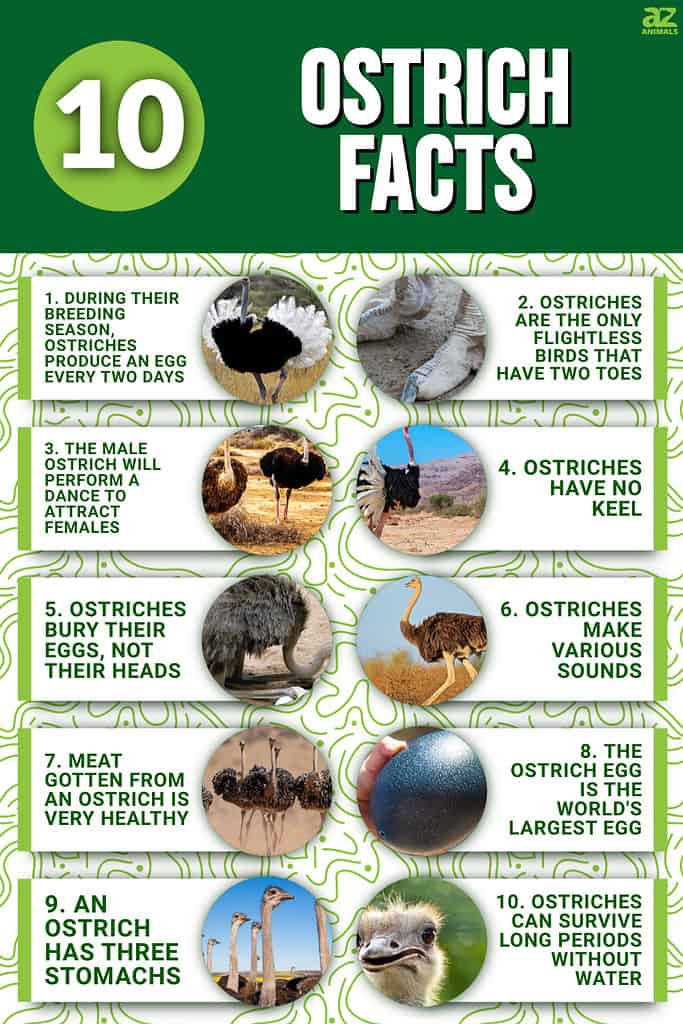
Interested in learning more about these flightless birds? With the common and Somali ostriches being the only two breeds of ostriches left, let’s dive into 10 incredible ostrich facts you probably didn’t know!
1. During their Breeding Season, Ostriches Produce an Egg Every Two Days
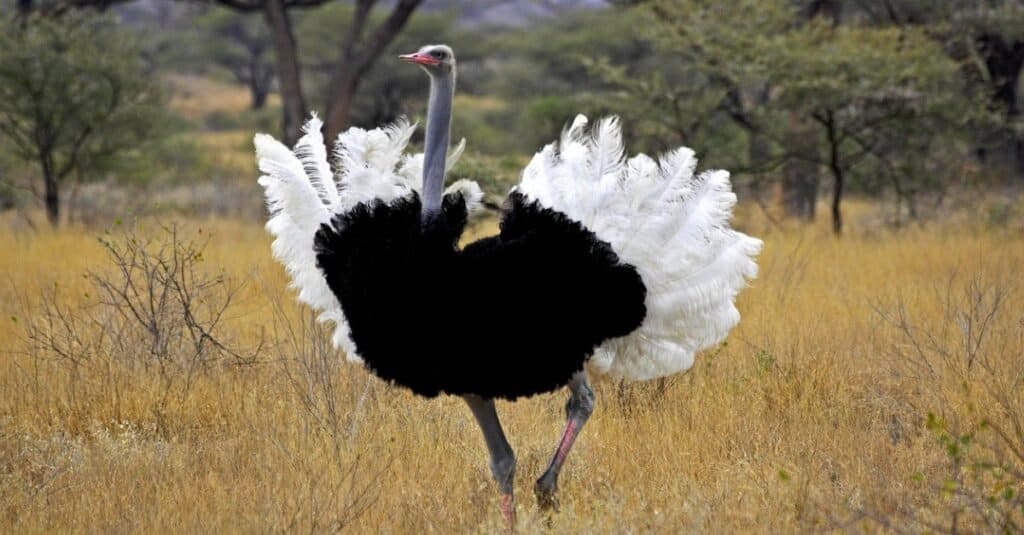
Female ostriches produce one egg every two days during the breeding season.
©iStock.com/slowmotiongli
The breeding season for ostriches often stretches between March and September. During this time, female ostriches produce one egg every two days. After completion, a single nest may hold up to 60 eggs which both the male and female ostrich may incubate.
2. Ostriches are the Only Flightless Birds That Have Two Toes
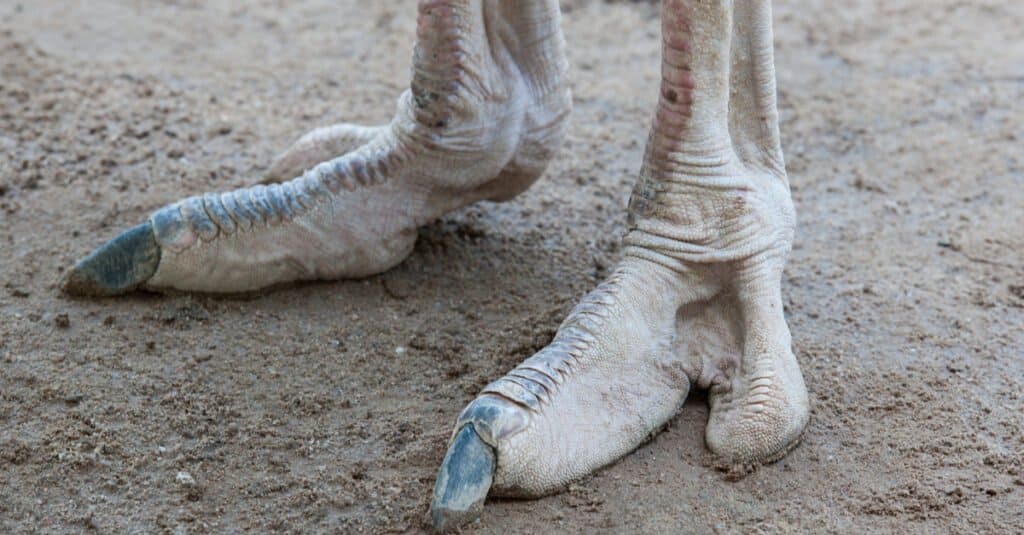
The ostrich’s two toes help it keep its balance.
©Ekkachai/Shutterstock.com
All flying birds have four toes on each foot, whereas flightless species have only three toes on each foot. The ostrich, however, is the only bird that has two toes on each foot. These toes are the size of hooves and protrude from the bottom of their feet, and this helps them keep their balance.
3. The Male Ostrich Will Perform a Dance to Attract Females

During the breeding season, male birds’ beak and shin colors turn crimson.
©Harry Beugelink/Shutterstock.com
The feathers of a male ostrich are used to entice a female ostrich, also known as a hen. Ostrich males perform courtship dances, wing flaps, and wing bows to entice females. In ostriches, the male’s neck glows red when he is ready to mate with his mate, while the female’s feathers become silvery.
It’s a remarkable sight, the courtship rituals of the ostrich. During the breeding season, male birds’ beak and shin colors turn crimson. They dance sensually to establish authority over the ladies while pursuing each other like maniacs.
4. Ostriches Have No Keel

Ostriches are flightless, keelless birds.
©Sergei25/Shutterstock.com
Ostriches are flightless because they lack a keel bone, which anchors the wing muscles. Bird bones are hollow, which means they’re portable and can fly. The keel, a flat breastbone region, attaches to the wing muscles.
Ostriches are flightless, keelless birds, and small wings can’t lift their hefty bodies off the ground. When sprinting and shifting directions, ostriches use their wings for balance.
5. Ostriches Bury Their Eggs, Not Their Heads
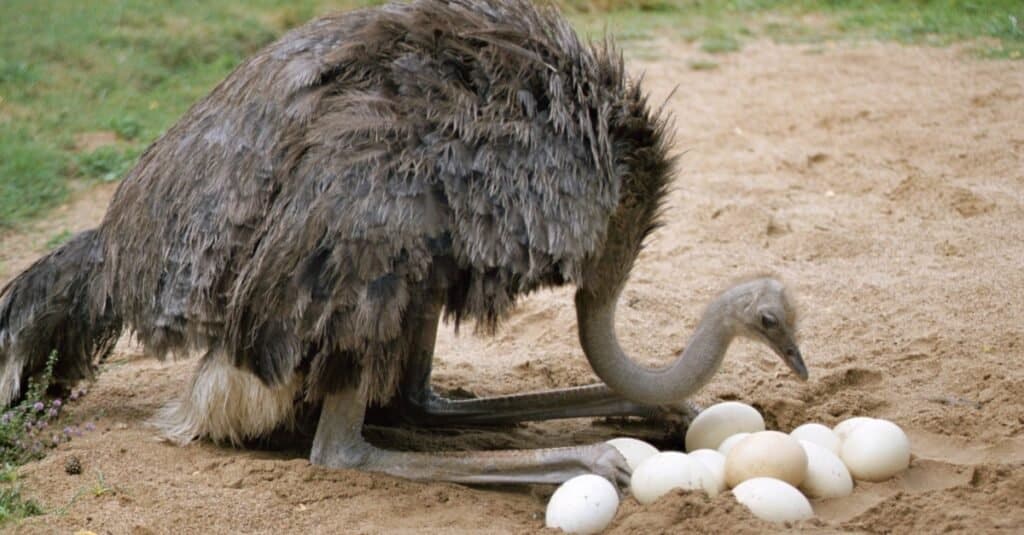
Contrary to popular belief, ostriches bury their eggs in holes in the ground and not their heads.
©fullempty/Shutterstock.com
“Burying your head in the sand” is an idiom that means to avoid an issue or ignore advice. This expression may have come from ostriches hiding their heads from predators. However, contrary to widespread belief, ostriches don’t bury their heads in actual sand. It’s thought that this belief began after observing ostrich nesting, in which they bury their eggs in holes in the ground.
6. Ostriches Make Various Sounds
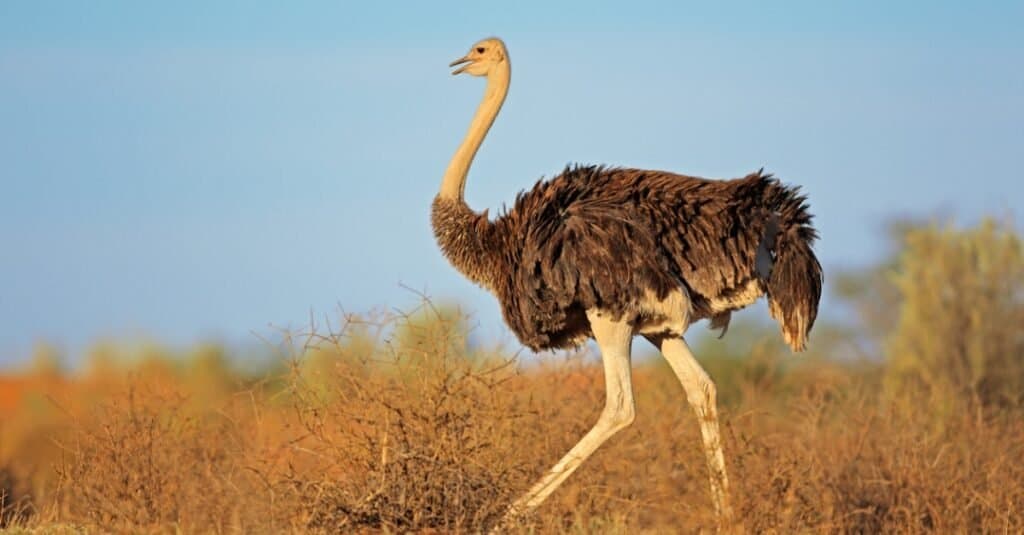
Ostriches rarely attack unless they feel threatened.
©iStock.com/EcoPrint
Ostriches honk, hiss, chirp, whistle, drum, grunt, and boom. Male ostriches create booming sounds when mating, but hissing means staying away. Male ostriches generate a low, deep boom. They keep their beaks shut while stretching their neck. During mating, males “boom” to indicate territory. While opening their beaks, female ostriches hiss.
7. Meat Gotten From an Ostrich is Very Healthy
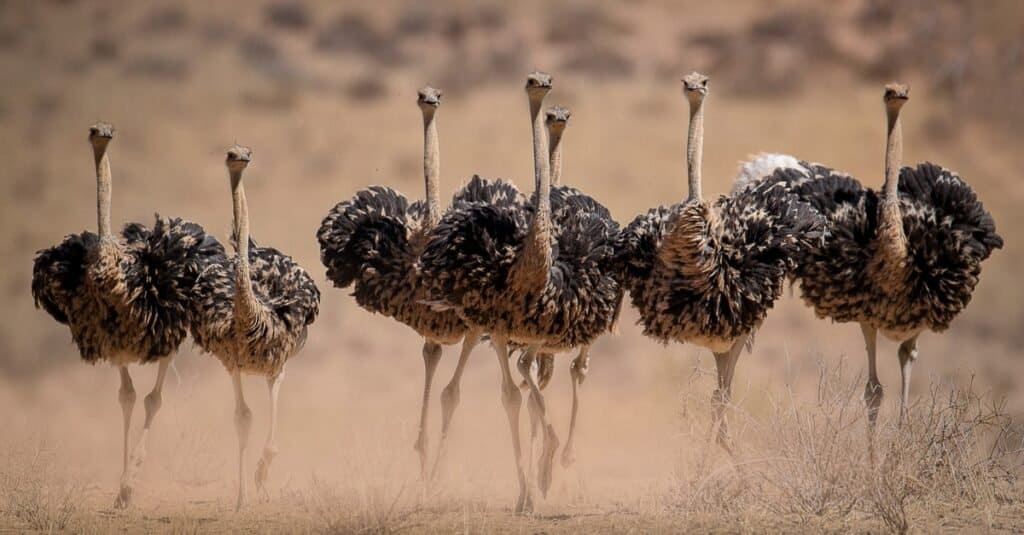
Ostrich meat contains a high amount of protein and calcium.
©bruna-nature/Shutterstock.com
People who live in ostrich territory are known to eat their meat. In addition to being served as steaks, ostrich meat is frequently served on stews. Ostrich meat has a flavor like lean beef, containing high protein and calcium but minimal fat and cholesterol.
A pound of ostrich fillets or tenderloin slices costs between $25 to $50, whereas a pound of minced beef costs an average of $6. The stiff shell of an ostrich egg prevents most humans from eating it. Nevertheless, ostrich eggs can still be eaten by humans. Around 2,000 calories are found in one large egg, which has far more iron and magnesium than a chicken egg but less vitamin E and A. A single egg can cost up to $35.
8. The Ostrich Egg is the World’s Largest Egg

An average ostrich egg weighs 1.5 kilograms (3.3 pounds).
©Dominique de La Croix/Shutterstock.com
The mother ostrich needs assistance cracking the eggshell to hatch her eggs. The normal ostrich egg weighs 1.5 kilograms (3.3 pounds) and measures 15 centimeters (5.9 inches). It is the world’s largest egg. The shell is so strong that it would not be damaged even if stepped upon by accident.
9. An Ostrich has Three Stomachs
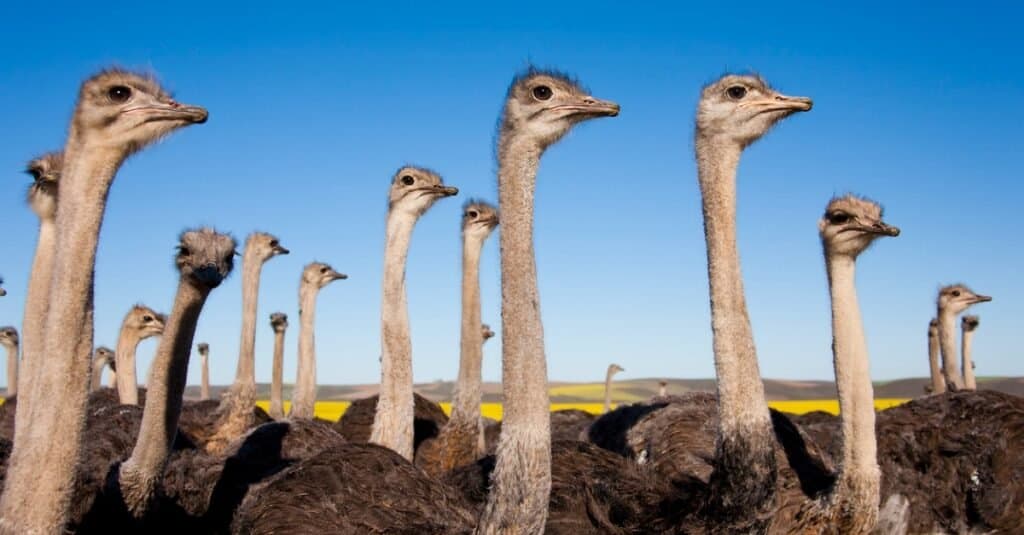
Due to the ostrich’s complex digestive system, ingested food takes over thirty-six hours to digest.
©iStock.com/AndreaWillmore
Ostriches are indeed unique among birds. The three stomachs they have are just one of their unique features. These stomachs are used for various functions as the glandular stomach serves as the gall bladder, and the muscular stomach grinds food before it enters its vast digestive tracts. The pee and feces of ostriches are separated in the 3rd stomach.
10. Ostriches Can Survive Long Periods Without Water
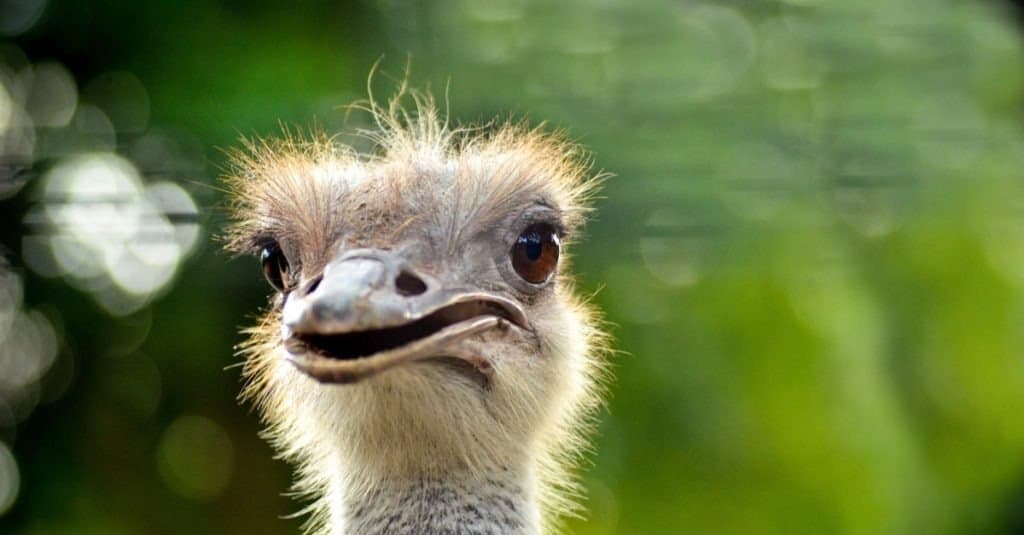
Plants offer enough moisture for ostriches to endure two weeks without additional water.
©muhd fuad abd rahim/Shutterstock.com
Ostriches get almost all their sustenance from plants; however, they will drink from a watering hole when dehydrated. They can increase their body warmth to avoid water loss on hot days. Ostriches eat roots, fruits, leaves, and seeds, but also lizards, rodents, and insects. Plants offer enough moisture for them to endure two weeks without additional water.
The photo featured at the top of this post is © iStock.com/EcoPrint
Thank you for reading! Have some feedback for us? Contact the AZ Animals editorial team.






